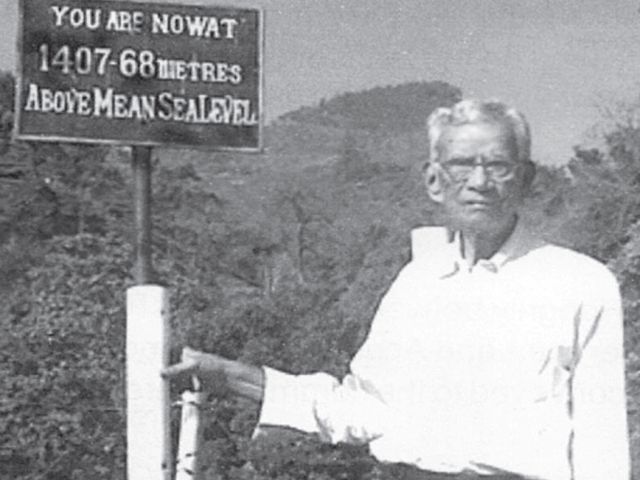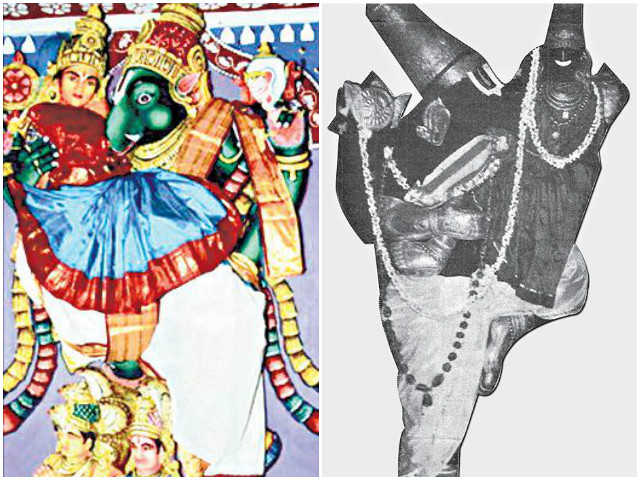Age no bar to research
He’s 93 now and he hasn’t stopped. That’s what he has been doing for much of his working life, and a lot more vigorously in the last 10 years over which he has brought out three books. He is is now working on his fourth. That’s S. Venkatraman of Mylapore, who retired as Stores Officer, Diesel Locomotive Works, Varanasi, in 1982.
From 2010, he has self-published three solid volumes of Indian Railway history and a fourth will come out next year. In 2010 he published Indian Railways at a Glance, 234 pages with 250 photographs. Then in 2014 came his magnum opus, Indian Railways: The Beginning up to 1900. This was 534 pages with 600 pictures! Now he has just released The Madras Railway from1849, with 248 pages and over a hundred pictures and documents. He promises that next year we will have with us his South Mahratta Railway 1888 to 1908.
The books may not be organised in the best manner possible for easy reading but what they have is information aplenty, unlikely to be found anywhere else but in the archives of the various Railway Divisions. I haven’t seen so much information, much of it with facsimiles of original documents (see first Madras Railway timetable alongside), in any publication that has come into my hands in recent times. Truly this laborious research has been one of love — and the result is a set of books that anyone interested in Indian Railways would want to grace his library.
Venkatraman may be contacted at laliram75@yahoo.com. That ‘lali’ in Venkatraman’s email address is, I suspect, the name of his wife who passed away a few years ago.
He tells the heart-warming story of their marriage. They passed out of high school together after getting married, got their Bachelor’s and Master’s degrees together and then he asked her to do her doctorate while he concentrated on his job and hobby, the output of the latter surely deserving of a doctorate.
Tall, slim, erect, sharp of mind and strong of voice Venkatraman belies his age. His secret of good health is walking five miles and climbing 200 steps a day till recently. He also says he eats less solids and consumes more liquids, including several bottles of water a day. Then, there’s the travelling — he travels about 10 days a month, on the railways of course. Travel has also taken him to several countries abroad. In the U.S., he discovered IRFCA, the Indian Railway Fans’ Club of America.
IRFCA is a privately maintained website that had its beginnings when Vijay Balasubramaniam, doing his Ph.D. at the University of Illinois, posted an article on the Shatabdis. Dheeraj Sanghi, doing his Ph.D. at the University of Maryland, responded. Into their exchange of mails came Sankaran Kumar, doing his post-doctorate at the University of Ohio. This was sometime in April 1989 and others have joined since. Today, IRFCA members are authors of hundreds of articles on all aspects of Indian Railways. Several of them have photo galleries. As Balasubramaniam says, “The site is intended for the benefit of all those interested in learning about the railways of India and to create awareness of Indian Railways.” This too is a bit of my learning from one of Venkatraman’s books.
Postscript: A couple of days after I came across the anagram IRFCA, I came across another intriguing American one, this one even closer to Madras. This one is CEGAANA and translates as College of Engineering Guindy Alumni Association of North America. It appears to operate out of the Bay Area. Contact: info@cegaana.org.
Two temples not one
Dr. N. Sreedharan and M. Desikan, responding to E.P. Parthasarathy’s comment (Miscellany June 13) on what I had written in Miscellany, May 30, offer me a wealth of information about the Thiruvidavendhai Perumal temple. This temple of Sri Lakshmivaraha Perumal is near Kovalam (Covelong), about 40 km from Madras and facing the sea. The village is popularly called Thiruvidanthai.
The presiding deity, taking the shape of Lord Vishnu’s third incarnation, Varaha the Boar, is iconised here as a nine-foot tall idol which is described by Desikan as follows: “(The Lord’s) consort Akhilavalli Ammal is seated on His left thigh, His left hand encircling Her waist, Her feet resting on the Lord’s lower palm. ‘Ida’ in the name Thiruvidavendhai refers to the Lord holding His consort on His left side (ida being ‘left side’). The Lord is holding a conch in his upraised right hand and a discus in His left. His right foot, raised knee-high, is resting on the many-hooded serpent Adi Sesha.”
Explaining the material used in the construction — about which (‘Saligramam nay Sila Thirumeni’) I had sought clarification — Dr. Sreedharan writes that Sila Thirumeni refers, in effect, to sacred stone (granite) and saligramams are special kinds of pebbles found in and around the Gandaki River in Nepal.
Their use in the icon could be for the garland the Lord wears, but, adds Dr. Sreedharan, that by using the word ‘nay’ E.P. Parthasarathy “seems to emphasise the former, i.e. the entire idol is in saligramam stones”.
A special feature of the temple are the poojas conducted for those seeking early marriage. He or she wishing to get married performs archana and offers two garlands, one for the Lord and the other for his consort.
The garlands, duly blessed, are returned to the offerer to wear and circumambulate the temple nine times, praying for a happy marriage soon. He or she is asked to take the garlands home and place them in a pooja room till the marriage happens. After the wedding, the couple is expected to bring the now-dried garlands to the temple and hang them on a tree there; a huge tree in the precincts is wreathed in thousands of dried garlands. ‘Beseech Lord Adi Varaha at Thiruvidanthai to bless you speedily with marital bliss,’ is the call of the temple near Kovalam, one of the 108 Divya Desams (pilgrim centres) of Vaishnavites.
Inscriptions dating to between the 10th and 16th Centuries speak of Chola, Pandya and other dynasties patronising the temple. Clearing the air further — and enabling me to say this is an end to this exchange — is V. Raja Narayanan who states that it is about two different temples this exchange has been all about. Thiru-Vada-Venthai, home of the coloured Perumal, is in Mahabalipuram itself, Thiru-(V)ida-Venthai is near Kovalam. In the former, vada means ‘right’ (the Lord having the Goddess on the right side of his body) and in the latter she is on the left (ida).
Narayanan also adds that saligramam is a kind of snail found in the river Gandaki in Nepal. It is believed Vishnu lives in the shell. Statues made out of saligramam are called Saligrama Sila Thirumeni, out of brick and mortar Sutha Thirumeni and, of wood, Sila Thirumeni. Wood is, however, rarely used. With that, I’m at last out of my depth.
Celebrating with walks
At a recent press conference, the catalysts of Madras Week announced that the Week this year would be celebrated between August 21 and August 28 but that, like last year, they expect programmes to start as early as the first week of August and go on till the first week of September.
They hoped that this year there would be more walks leading to greater appreciation of the city. It was suggested that citizen volunteers lead walks in their respective areas. Some areas suggested were Mint Street, Broadway, Harrington Road, Mada Street (Royapuram), Robinson Park surroundings, and Besant Nagar.
There are hundreds more for potential walk-leaders to think about.
In a coincidence, just before the press meet I had lunch with Surekha Narain of Delhi who leads walks in the Capital.
She offers 45 walks and adds at least one new walk every year. Impressive.
But what was more relevant to Madras was that Delhi last year organised a Heritage Walks Week — and there were 85 different walks, Narain conducting one every day.
Last year, Madras Week had about 40 walks. This year, should we aim at 100? Or at least attempt to beat Delhi’s record.
source: http://www.thehindu.com / The Hindu / Home> Features> Metroplus / S. Muthiah / June 26th, 2016

